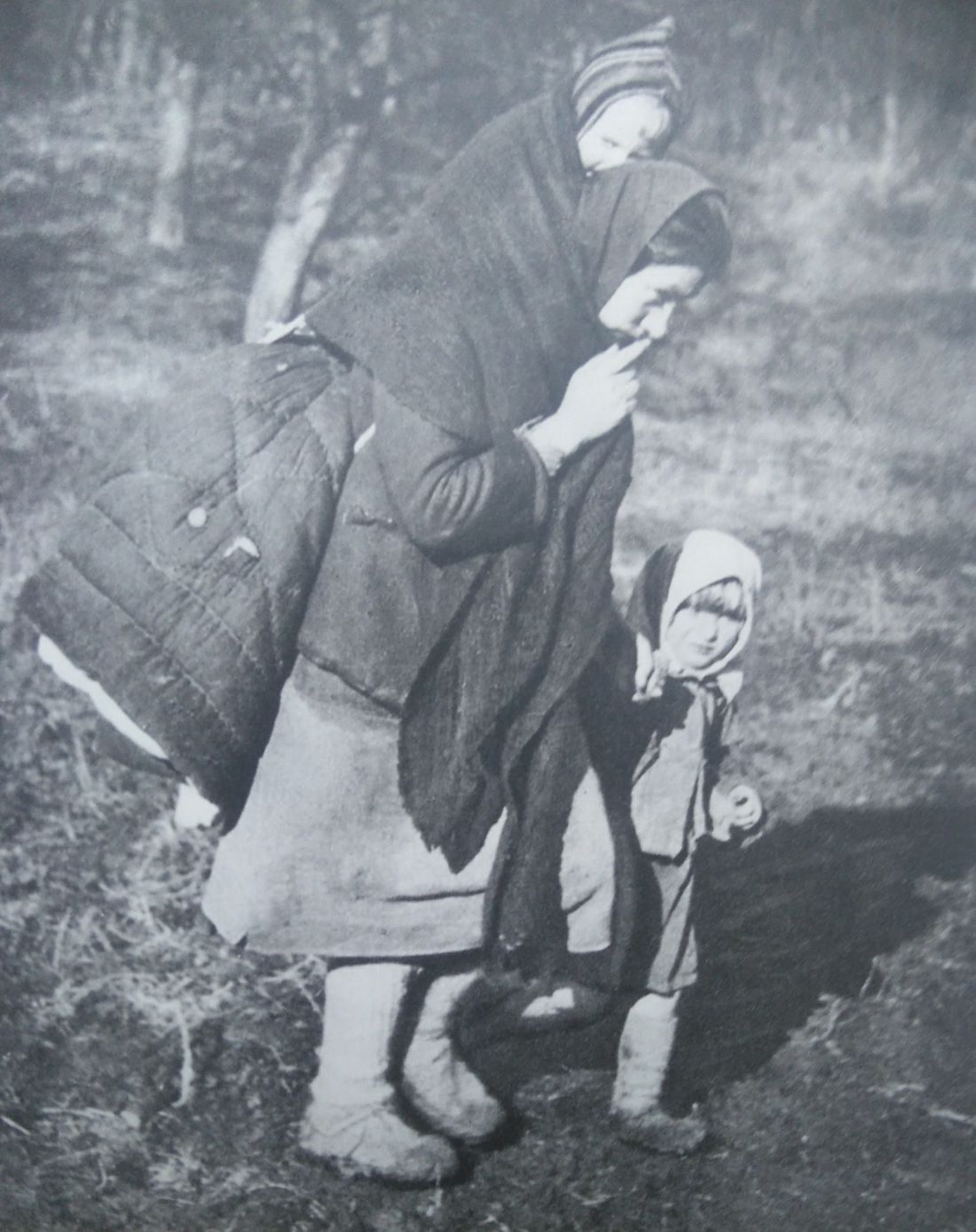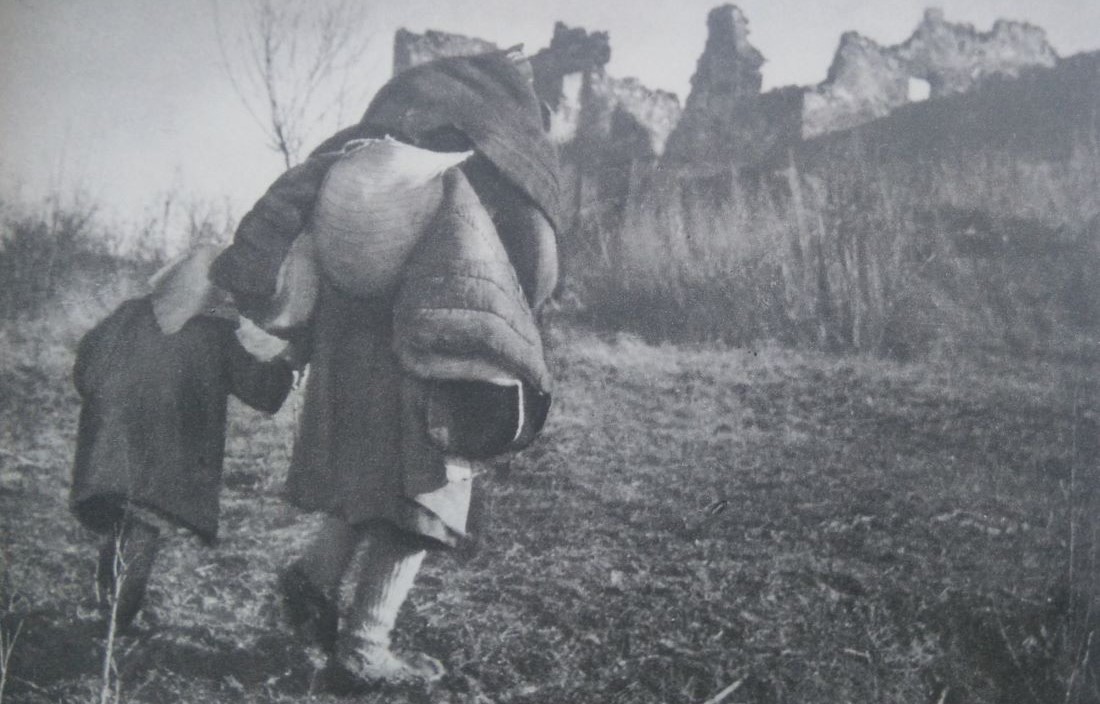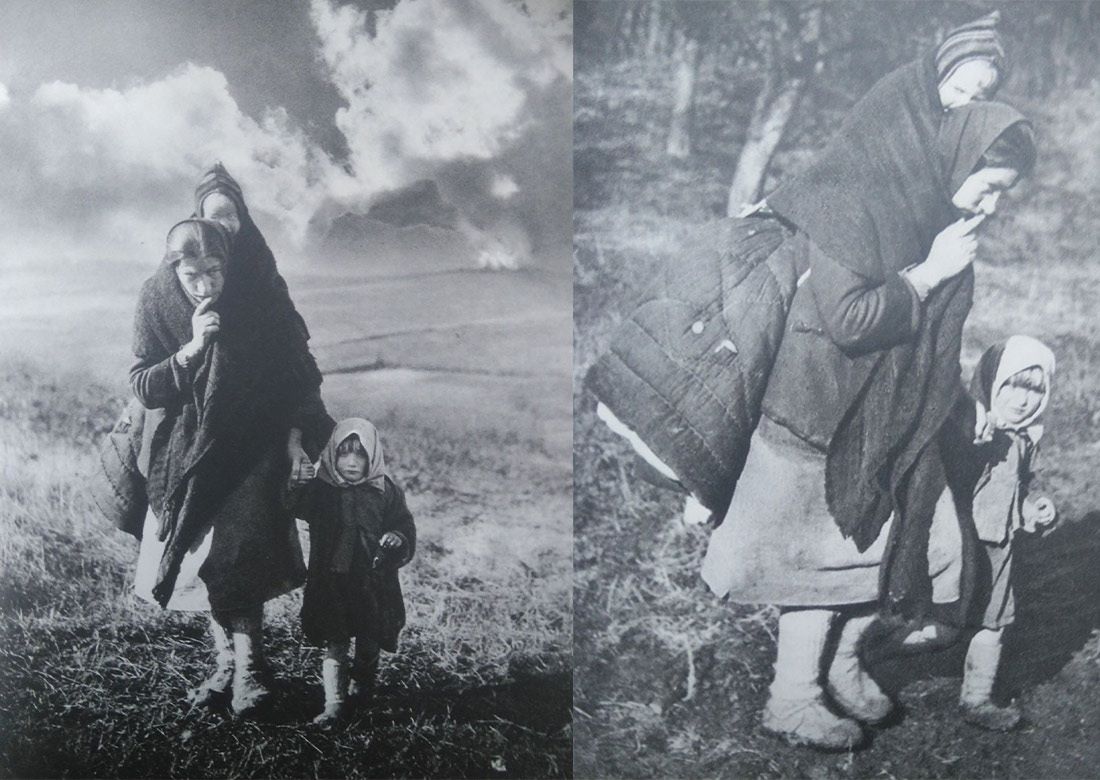The photograph, known as “Mother from Knežpolje,” (Majka Knežopoljka) has become a symbol of the suffering endured during World War II, not just in the Kozara mountain region and Potkozarje but across the whole of Yugoslavia. It was captured in January 1944 by photographer Žorž Skirigin. The image shows a woman from the village of Knežpolje, Milica Tepić, with her son Branko on her back and her daughter Dragica by her hand. Skirigin vividly described the moment of capturing this photograph:
“The January sun, sharp and high, had risen when we received instructions to head towards Knežpolje… The hospitable people from the mountain Kozara wanted to ease our journey through the offensive, so we even got horses to ride… Along with us was a large group of evacuees, all laden with necessities for a prolonged period. As we descended into Knežpolje, I saw a woman walking apart from the others. She was leading one child by the hand, with the other tied to her back, carrying essentials to fend off the winter and the long offensive. There was a quilt, a bag of food, and even pots. Riding beside her, I waited for the chance to capture her better… I ran about twenty meters ahead of her and lay down in the grass, waiting for her to pass. Deep in thought, she approached, still with her hand on her face. And finally, the expression I wanted to capture was right in front of me.”

When Skirigin asked Milica where she was headed, she replied, “They killed my husband in the first [wave], and now they’ve burned down the house. Ah, if it weren’t for these two, I’d know where to go.”
Georgije-Žorž Vladimirovich Skirigin
Georgije-Žorž Vladimirovich Skirigin, a celebrated Yugoslav National Liberation War participant, film director, and photographer, was born on August 4, 1910, in Odessa and passed away on October 30, 1997, in Belgrade. Born into a noble family, he witnessed significant historical changes, moving to Serbia after the October Revolution. During WWII, he joined the Partisans and created a remarkable collection of around 500 photographs, capturing the war’s essence, including internationally acclaimed portraits of Josip Broz Tito and “Mother from Knežpolje.”

Post-war, Skirigin focused on filmmaking, directing 22 films, and becoming the General Director of the Association of Yugoslav Film Workers. His photography, capturing crucial war moments, earned him international recognition and numerous awards, including the title of Master of Photography in Serbia in 1951. Skirigin’s legacy remains influential in both the fields of photography and film.
The Story Behind the Photograph
The Story Behind the Photograph begins on July 4, 1942, amid the tumultuous events of World War II. The people of Mount Kozara were fiercely breaking through the encirclement of the Axis offensive, navigating trenches, evading tanks, and dodging bunkers. This harrowing journey, undertaken in the brief hours of a July night, transformed real-life experiences into legends.

The narrative centers around Milica Tepić, a young woman who faced unimaginable challenges during this time. Her husband, Branko Tepić, a machine gunner, lost his life in the struggle to break the siege around Kozara, leaving behind Milica, who was on the verge of giving birth, and their three-year-old daughter Dragica. In the chaos, Milica gave birth to a healthy son amidst fleeing refugees and named him Branko, after his late father.
When a new enemy offensive began in January 1944, Milica Tepić found herself once again fleeing with her two children, during which this photograph was taken. As they retreated from the enemy towards Kozara, Milica held her four-year-old daughter Dragica by the hand, while carrying two-year-old Branko on her back.
Tragically, after the war, amidst the hardship that followed, Dragica passed away in 1949, at the age of 29.
The poignant circumstances surrounding this family were captured in a photograph that would travel far beyond the confines of their war-torn land. This image, showing Milica Tepić with her children during these dire times, has become an enduring symbol of the suffering endured by the Serbian and Yugoslav people during World War II. The photograph, taken by Žorž Skirigin, not only tells the story of the Tepić family but also represents the resilience and pain of a nation during one of history’s darkest chapters. This image has circled the globe, standing as a powerful testament to the human spirit in the face of adversity.
Historical Challenge: Can You Conquer the Past?
Answer more than 18 questions correctly, and you will win a copy of History Chronicles Magazine Vol 1! Take our interactive history quiz now and put your knowledge to the test!

